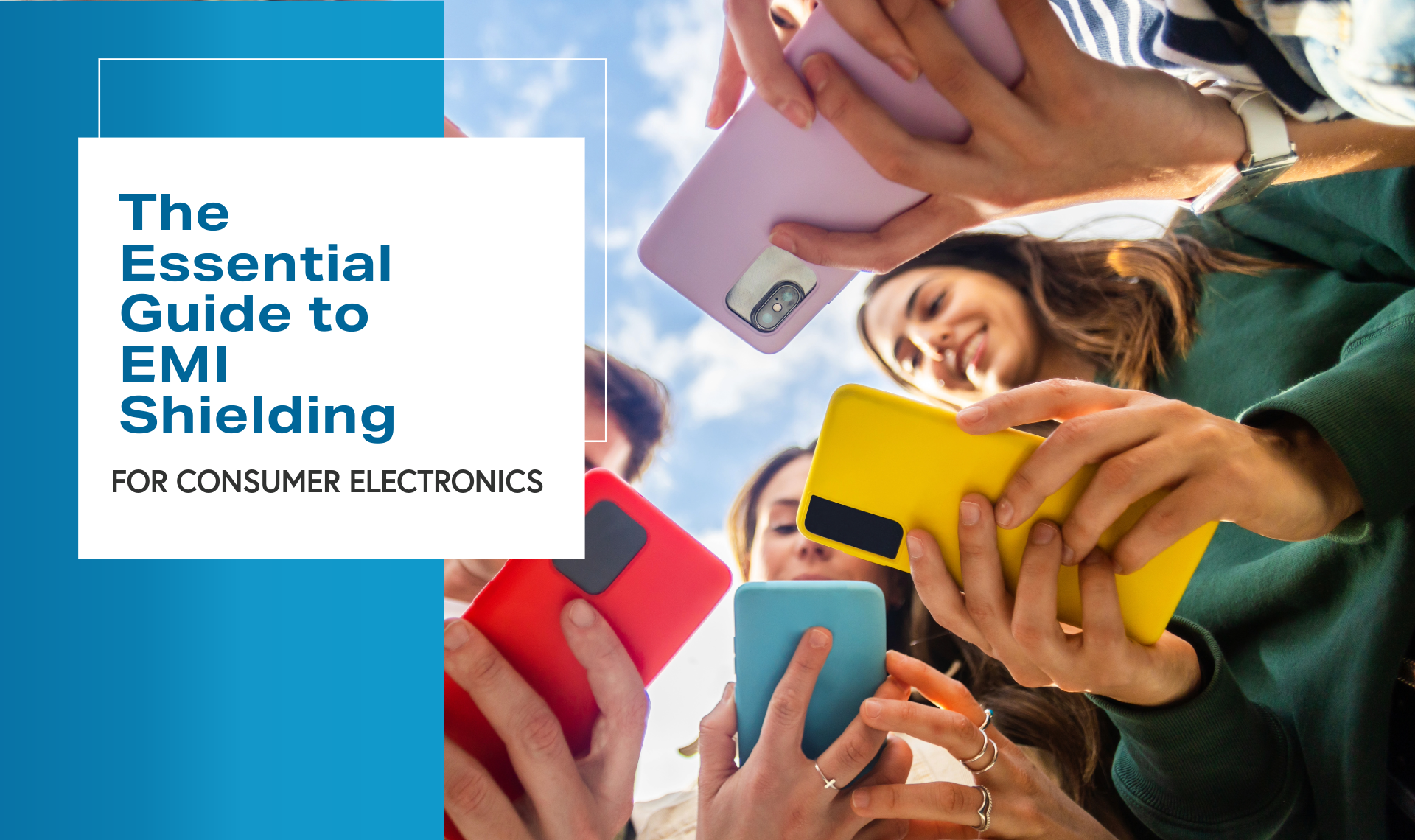Enhancing Device Integrity and Performance: EMI Shielding Guide
Enhancing Device Integrity and Performance: EMI Shielding Guide

The Essential Guide to EMI Shielding for Consumer Electronics
Electromagnetic interference (EMI) is a growing challenge in the design and production of modern consumer electronics. As devices become smaller, more powerful, and more densely integrated, EMI and RFI (radio frequency interference) can compromise signal clarity, degrade performance, and even cause devices to fail critical regulatory compliance tests — making reliable EMI and RFI protection coatings essential in consumer electronics design.
For manufacturers of wireless earbuds, smart home hubs, gaming accessories, mobile devices, and other connected products, EMI shielding must be incorporated into the design stage to ensure performance, safety, and electromagnetic compatibility (EMC) in consumer electronics. The key lies in selecting the right shielding process for each product’s unique requirements.
The Purpose of EMI Shielding in Electronics
EMI shielding works by blocking or containing unwanted electromagnetic emissions through a conductive barrier. This prevents external interference from disrupting sensitive internal components, stops signal leakage, and helps devices meet FCC and global EMC (electromagnetic compatibility) standards.
In consumer electronics, this shielding is often applied directly to plastic enclosures, which are naturally non-conductive. Achieving reliable EMI protection on these substrates requires precision coating technologies that deliver both performance and manufacturing efficiency.
EMI Shielding Technologies at Mueller
At Mueller Coatings, we offer two proven methods for applying EMI shielding to non-metallic enclosures:
Each technology offers distinct advantages depending on part geometry, size, production volume, and shielding performance requirements.
Vacuum Metalizing: Uniform Shielding for High-Volume Production
Vacuum metalizing is a physical vapor deposition (PVD) process ideal for high-volume consumer electronics. As a widely used method of PVD EMI shielding, it deposits a thin, conductive layer of aluminum onto the part in a controlled vacuum environment, producing a uniform and highly conductive surface.
How the Process Works:
- Surface Preparation: Cleaning and conditioning the substrate to promote adhesion, often with plasma treatment or surface activation.
- Basecoat Application: Applying a UV- or thermally-cured basecoat to ensure uniform coverage and smoothness.
- Metal Deposition: Vaporizing aluminum inside a vacuum chamber and condensing it onto the part to create a continuous conductive layer.
- Topcoat (Optional): Adding a protective clear coat to enhance durability and resist oxidation or abrasion.
Multi-Layer Vacuum Coating Applications:
Our advanced vacuum coating process supports custom multi-layer metal systems to meet specific shielding and durability requirements. Common combinations include:
- Copper / Aluminum
- Copper / Stainless Steel
- Copper / Nickel Chrome
These combinations improve shielding effectiveness across varied frequency ranges while enhancing corrosion resistance. Our engineering team collaborates with manufacturers to develop tailored EMI solutions that meet both performance targets and regulatory standards.
Best For:
- Complex geometries with tight tolerances
- Parts up to 24” x 60”
- High-volume production requiring repeatable finish quality
Vacuum metalizing ensures uniform conductivity, tight process control, and aesthetic consistency, making it ideal for enclosures where design and performance go hand in hand.
Conductive EMI/RFI Spray Coatings
When parts are too large for vacuum chambers or require more material flexibility, conductive spray coatings are a powerful alternative. These coatings are formulated with metal or carbon-based conductive particles and applied using standard spray techniques.
Advantages of Conductive Spray Coatings:
- No Size Limitations: Suitable for large, irregular, or uniquely shaped parts
- Customizable Durability: Protective topcoats available for enhanced abrasion and chemical resistance
- Tailored Formulations: Adjustable to meet specific conductivity and shielding targets
- Broad Material Compatibility: Effective on a variety of plastics and composites
Trusted Coating Brands We Use:
- MG Chemicals
- 841AR Super Shield Nickel Conductive Coating
- 842AR Conductive Coating
- 843AR Super Shield Silver-Coated Copper
- Chomerics (Parker)
- CHO-SHIELD 2056 (silver-plated copper)
- CHO-SHIELD 4900 (silver-filled acrylic)
- CHO-SHIELD 4914 (nickel-filled acrylic)
- Spraylat
- SERIES 599-Y2000 Copper Conductive Coating
These coatings deliver exceptional EMI/RFI protection while maintaining mechanical flexibility, making them well-suited for diverse product designs.
Choosing the Right Shielding Method
Selecting the right EMI shielding method – vacuum metalizing or conductive spray coatings – depends on several key factors. Manufacturers should evaluate part size, production volume, durability needs, and overall design complexity to determine the best-fit approach for their consumer electronics.
The table below provides a side-by-side comparison of vacuum metalizing vs. conductive spray coatings to guide decision-making:
Reliable Shielding, Backed by Experience
With over 50 years of proven experience in advanced coatings, Mueller delivers precision EMI shielding solutions that meet the performance, safety, and compliance demands of today’s electronics. Our capabilities ensure that your product not only performs reliably in the field but also meets industry standards for electromagnetic compatibility (EMC).
Whether you’re launching a new product or scaling production, our vacuum metalizing and conductive spray coating services are designed to ensure reliability, compliance, and market success.
Not sure which EMI shielding method is right for your design?
Contact Mueller Coatings today to discuss your product requirements and discover how our innovative coating technologies can protect and elevate your next consumer electronics launch.





